Bodybuilding
Cold Immersion Therapy for Recovery

Ice immersion therapy, also known as cold immersion or cryotherapy, is a recovery technique that some bodybuilders use to reduce muscle soreness and inflammation after intense workouts.
Types of Cold Immersion Therapy
Ice immersion techniques can benefit bodybuilders as they may help reduce inflammation, promote recovery, and improve overall muscle performance. Here are some types of brutal immersion methods suitable for bodybuilders:
1. Cold Water Baths: Submerging yourself in a cold water bath or an ice bath can help reduce muscle soreness and inflammation after intense workouts. Water temperatures typically range from 50°F (10°C) to 59°F (15°C).
2. Cryotherapy Chambers: Cryotherapy involves standing in a cryotherapy chamber briefly while being exposed to frigid temperatures, often around -220°F (-140°C). This can rapidly reduce muscle soreness and improve recovery.
3. Cold Showers: Cold showers are a more accessible and convenient option for bodybuilders. You can alternate between hot and cold water during your shower or finish with a brief blast of cold water to help with muscle recovery.
4. Contrast Baths: Contrast baths involve alternating between hot and cold water immersion. This can enhance circulation, reduce muscle soreness, and promote recovery. For bodybuilders, it's essential to focus on the complex phase.
5. Ice Packs or Ice Massage: Ice packs or massages on specific muscle groups can help target sore areas. This can be particularly useful for localised muscle soreness and injuries.
6. Localized Cryotherapy: Some facilities offer localised cryotherapy using devices that deliver frigid temperatures to specific muscle groups, which can help reduce inflammation and soreness in targeted areas.
Check Out: Universities with Best Gyms In the U.S
Cold Immersion Procedure
Here's an essential procedure for ice immersion therapy:
1. Prepare the equipment:
◦ Fill a bathtub or container with cold water. The temperature can vary, but it's typically between 50°F (10°C) and 59°F (15°C). You can use ice or cold water from the tap.
◦ Have a timer or stopwatch ready to monitor the duration of the immersion.
2. Dress appropriately:
◦ Wear minimal clothing to ensure direct contact between your skin and the cold water. Swimsuits or shorts are often suitable.
3. Pre-immersion activities:
◦ Consider light physical activity or stretching to warm your muscles and increase blood flow. This can help prevent shock when you enter the cold water.
4. Immersion:
◦ Slowly enter the cold water, starting with your feet and gradually submerging your entire body. Try to relax and control your breathing.
5. Immersion duration:
◦ The optimal duration can vary, but common recommendations range from 10 seconds to 20 minutes. Beginners should start with shorter durations and gradually increase as they become accustomed to the cold.
6. Monitor your body:
◦ Pay attention to your body's response. Shivering is a normal reaction to the cold, but if you experience severe discomfort or any signs of hypothermia (extreme shivering, confusion, or numbness), exit the water immediately.
7. After immersion:
When the immersion time is up, slowly exit the cold water. Dry off and warm up using towels, warm clothing, or a blanket. Some people find it beneficial to engage in light exercise or stretching after ice immersion.
What You Need for An Ice Immersion
Cold immersion, such as cold water swimming or ice baths, requires some equipment to ensure safety and comfort. Here are some essential items:
1. Wetsuit or Drysuit: A good-quality wetsuit or drysuit is essential to keep your body insulated in cold water.
2. Neoprene Boots and Gloves: These help keep your extremities warm and protected.
3. Swim Cap: A neoprene swim cap can help keep your head warm and reduce heat loss.
4. Thermometer: A water thermometer can help you monitor water temperature and ensure it's safe for your cold immersion.
5. Safety Equipment: In case of emergencies, it's a good idea to have a safety float or buoy, as well as someone watching over you.
6. Warm Clothing: Have warm, dry clothes ready after cold immersion to avoid post-immersion cooling.
7. Timer or Watch: To keep track of your immersion time, as prolonged exposure to cold water can be dangerous.
8. Medical Kit: Just in case, it's wise to have a basic first aid kit nearby.
How Bodybuilders Gain from Cold Immersion Therapy
Cold water immersion therapy, such as ice baths or cold water immersion, can offer several potential benefits to bodybuilders:
Reduced Muscle Inflammation: Cold immersion can help reduce muscle inflammation and soreness, potentially speeding up recovery after intense workouts.
Improved Circulation
Cold exposure can promote blood vessel constriction and dilation, enhancing muscle circulation and nutrient delivery.
Enhanced Recovery
Cold therapy may help bodybuilders recover faster between training sessions, allowing for more frequent and productive workouts.
Pain Relief
Ice immersion can temporarily relieve muscle aches and joint discomfort associated with intense training.
Enhanced Endurance
Some athletes use cold therapy to improve endurance and tolerance to cold, which can be advantageous in certain sports.
Mental Toughness
Regular exposure to cold can help build mental resilience and discipline, which can be valuable for maintaining a consistent training regimen.
Caution During Cold Immersion
Cold immersion, such as cold or ice baths, can have potential risks and should be done cautiously. Here are some important considerations:
Gradual Exposure
Start with shorter periods of immersion and gradually increase the time to allow your body to adapt to the cold.
Monitor Temperature
Ensure the water temperature is not dangerously cold. Icy water can lead to hypothermia.
Know Your Limits
Pay attention to your body's signals. If you start shivering uncontrollably or feel intense discomfort, it's time to exit the cold water.
Supervision
If possible, have someone present to assist you or call for help if needed.
Pre-existing Conditions
If you have any medical conditions or are taking medication, consult a healthcare professional before attempting cold immersion.
Warm-Up and Warm Clothing
Warm up before immersing in cold water, and have warm clothing and blankets ready after the immersion.
Hydration and Nutrition
Ensure you're well-hydrated and have eaten appropriately before attempting cold immersion.
Safety Precautions
Be cautious of slippery surfaces around the immersion area to prevent accidents.
Alternatives to cold water immersion
Must Read: Why an Experienced Lifter Must Use A Coach?
Options for cold water immersion for various purposes can include:
Cold Compress
Applying a cold compress or ice pack to specific body areas for short durations can help reduce inflammation and relieve pain without submerging the entire body in cold water.
Contrast Bath
Alternating between hot and cold water immersion, typically in separate containers or using hot and cold packs, can be used for muscle recovery and circulation improvement.
Cryotherapy
Whole-body cryotherapy involves standing in a chamber with frigid air for a short time, which can provide some of the benefits of cold water immersion.
Cold Showers
Taking cold showers can help improve alertness, boost circulation, and increase tolerance to cold, though it's less intense than full-body immersion.
Ice Baths
Similar to cold water immersion but focused on specific areas, such as submerging your legs in an ice bath for muscle recovery.
Cooling Clothing
Specialized clothing with cooling properties can help regulate body temperature and provide a milder alternative to full-body cold immersion.
Cold Packs or Gel Wraps
Use cold packs or gel wraps on sore or inflamed body parts for localised relief.
Is There A Specific Time for Cold Baths?
The best time for ice immersion therapy, such as cold showers or ice baths, can vary depending on your goals and personal preferences. Some people prefer it in the morning to help wake up and boost alertness, while others find it more relaxing in the evening to unwind and improve sleep quality.
Ultimately, it's a matter of what works best for you and your schedule. Just be cautious not to do it right before bedtime if it makes it difficult to fall asleep, as the body needs time to warm up and return to a comfortable temperature afterwards.
Overall
In summary, cold water immersion can be a valuable tool for bodybuilders when used judiciously, primarily for reducing muscle soreness and aiding recovery. However, it should be integrated into their training regimen with care and consideration of calledferences and needs.
Related Article: ChatGPT and Other Avenues to Find Great Bodybuilding Coaches
Bodybuilding
Top Video Games for Bodybuilders in 2024

There are several video games that can be great for bodybuilders, combining fitness and fun! Here are some of the best options:
Ring Fit Adventure (Nintendo Switch)
The game uses the Ring-Con and Leg Strap to guide you through various exercises and adventures. It's a fun way to get a full-body workout while playing a game.
Fitness Boxing 2: VR Boxing Remastered (PlayStation VR)
It offers a full-body boxing workout with a variety of punches and combos. It's a great way to improve your fitness while enjoying a virtual boxing experience.
Must Read: Marvel-Inspired Training Clothing on Amazon
Just Dance 2024
This popular dance game gets you moving to the beat with a variety of songs and dance routines. It's a fun way to burn calories and improve your coordination.
Zumba Fitness
Burn It Off (Nintendo Wii): This game offers a fun and energetic Zumba workout, perfect for those who enjoy dancing and want to get a good cardio workout.
Yoga for Beginners
If you're looking for a more relaxing workout, yoga games can help improve flexibility and reduce stress. Many of these games offer guided yoga sessions that you can follow along with.
Gym Tycoon
This game lets you build and manage your own gym, complete with various workout equipment and fitness classes. It's a great way to learn about different exercises and how to create effective workout routines.
The Sims 4: Fitness Stuff Pack
This expansion pack for The Sims 4 adds fitness equipment and activities to the game, allowing you to improve your character's fitness and join the athlete career.
Grand Theft Auto: San Andreas
While not a traditional fitness game, this classic game includes bodybuilding activities that can help your character gain muscle and improve fitness.
Knockout Home Fitness (Nintendo Switch)
This game offers a variety of boxing workouts that can help improve your strength and endurance.
Gym Simulator 24 (PC)
In this simulation game, you can build and manage your own fitness empire, creating workout routines and managing gym equipment.
Let's Get Fit (Nintendo Switch)
This game focuses on pure workouts, allowing you to set programs and follow along with digital trainers for a customized fitness experience.
Beat Saber (VR)
A popular VR game where you slash blocks to the beat of the music, providing an intense full-body workout.
Synth Riders (PlayStation VR)
This game combines freestyle dance and fitness, offering high-tempo tracks and multiplayer modes for a fun and energetic workout.
Yoga Master (PlayStation)
Designed by professional yoga coaches, this game offers a variety of yoga lessons and poses to improve flexibility and reduce stress.
Les Mills Bodycombat (PlayStation VR)
A martial arts-inspired workout game with a range of workout plans and coaching to keep you motivated.
OhShape Ultimate (PlayStation VR)
This game provides a full-body cardio workout with six sessions and two difficulty levels, designed to engage every part of your body.
These games offer a mix of cardio, strength, and flexibility workouts, making them great additions to your fitness routine.
Related Article: Supplemental Breast Milk for Bodybuilders
Bodybuilding
2nd Edition of Natural Bodybuilding Competition Facts

Natural bodybuilding competitions are designed to promote and celebrate athletes who build their physiques without the use of performance-enhancing drugs. These events emphasize fair play, health, and the natural development of muscle mass and definition.
The second edition of natural bodybuilding competitions has gained momentum globally, particularly focusing on drug-free athletes. These competitions are hosted by various organizations like the INBA/PNBA (International Natural Bodybuilding Association/Professional Natural Bodybuilding Association) and OCB (Organization of Competitive Bodybuilders).
In 2024, several notable events have been planned, including the INBA Natural Universe and INBA World Cup, both of which emphasize natural bodybuilding through rigorous drug testing policies. These events aim to showcase competitors who adhere to strict drug-free protocols, and winners often earn pro cards allowing them to compete in higher-level professional competitions.
These competitions focus on categories like men's bodybuilding, classic physique, and women's figure and bikini, among others. Athletes undergo polygraph and urine tests to ensure compliance with natural bodybuilding standards. The winners often receive medals, trophies, or pro status
Bodybuilding
Primal Movements: Our Ultimate Guide for Maximum Results
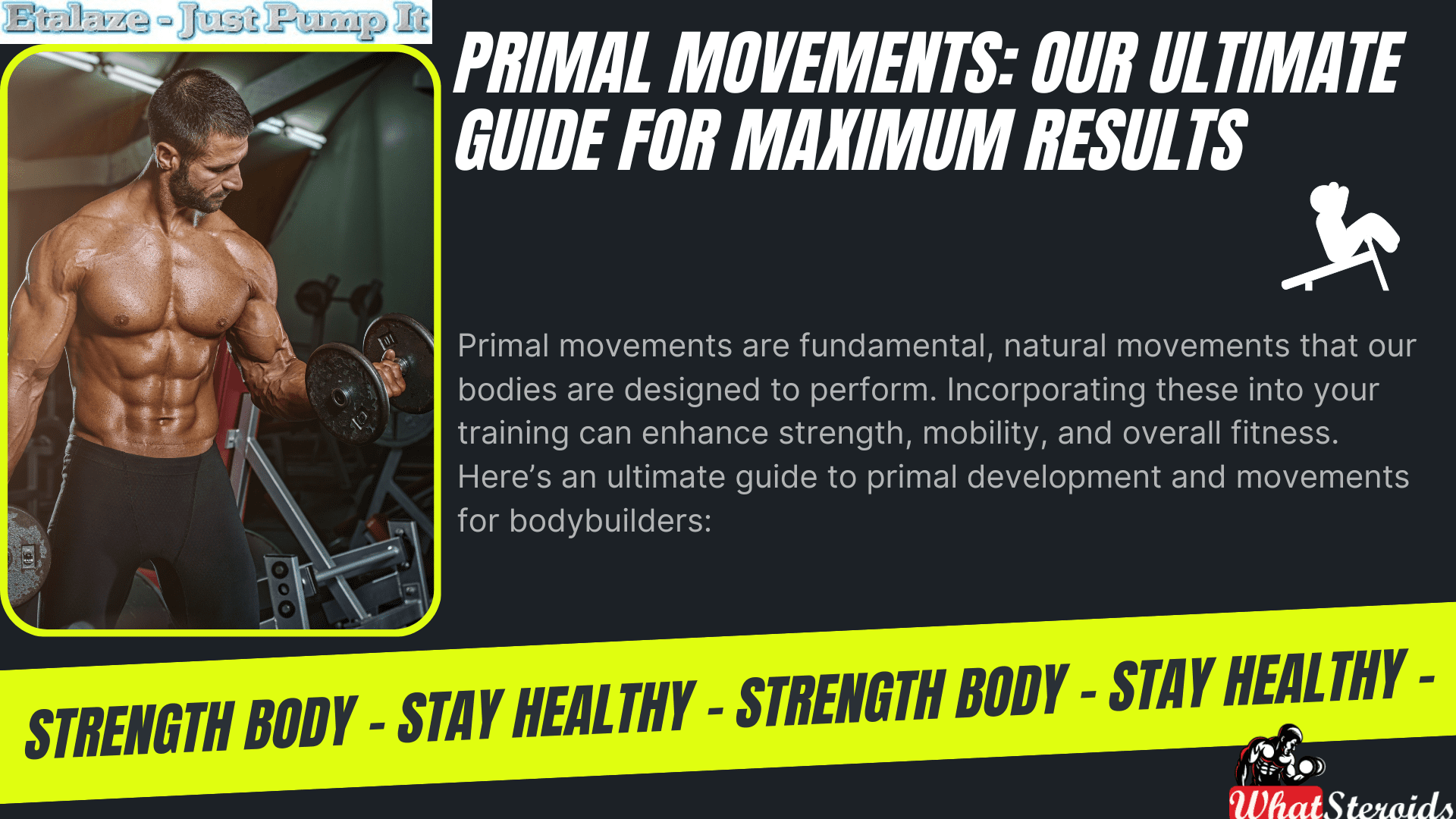
Primal movements are fundamental, natural movements that our bodies are designed to perform. Incorporating these into your training can enhance strength, mobility, and overall fitness. Here’s an ultimate guide to primal development and movements for bodybuilders:
 Buy Cut Long 300 by Dragon Pharma
Buy Cut Long 300 by Dragon Pharma
Understanding Primal Movements
Primal movements are basic, functional movements that mimic the natural actions humans have performed for thousands of years. These movements are essential for developing a strong, balanced, and resilient body. They can be categorized into seven primary patterns:
Related Article: How Much Do You Know About B-AET? A Fat Burner You’ve Been Missing
- Push
- Pull
- Squat
- Lunge
- Hinge
- Rotate
- Gait (Locomotion)
The Seven Primal Movement Patterns
Push
Description: Involves moving a weight or resistance away from your body.
Examples: Push-ups, bench press, overhead press.
Muscles Worked: Chest, shoulders, triceps.
Pull
Description: Involves drawing a weight or resistance towards your body.
Examples: Pull-ups, rows, bicep curls.
Muscles Worked: Back, biceps, forearms.
Squat
Description: A fundamental lower-body movement where you lower your hips from a standing position and then stand back up.
Examples: Bodyweight squats, barbell squats, goblet squats.
Muscles Worked: Quadriceps, hamstrings, glutes, calves.
Lunge
Description: A single-leg movement that involves stepping forward, backward, or to the side and lowering your hips.
Examples: Forward lunges, reverse lunges, lateral lunges.
Muscles Worked: Quadriceps, hamstrings, glutes, calves.
Hinge
Description: Involves bending at the hips while keeping a neutral spine.
Examples: Deadlifts, kettlebell swings, hip thrusts.
Muscles Worked: Hamstrings, glutes, lower back.
Rotate
Description: Involves twisting or rotating the torso.
Examples: Russian twists, woodchoppers, cable rotations.
Muscles Worked: Obliques, abdominals, lower back.
Gait (Locomotion)
Description: Involves movements that propel the body forward.
Examples: Walking, running, crawling, bear crawls.
Muscles Worked: Full body, with emphasis on legs and core.
Benefits of Primal Movements
Functional Strength: Primal movements enhance your ability to perform everyday tasks efficiently and safely.
Improved Mobility: These movements promote flexibility and range of motion, reducing the risk of injury.
Balanced Development: By working multiple muscle groups, primal movements ensure balanced muscle development.
Core Stability: Many primal movements engage the core, improving overall stability and strength.
Increased Caloric Burn: Compound movements like these burn more calories, aiding in fat loss and conditioning.
Incorporating Primal Movements into Your Training
Warm-Up: Start with dynamic stretches and light cardio to prepare your body.
Compound Exercises: Focus on compound exercises that incorporate multiple primal movements.
Progressive Overload: Gradually increase the weight or resistance to continue making gains.
Variety: Mix up your routine to prevent plateaus and keep your workouts interesting.
Recovery: Ensure adequate rest and recovery to allow your muscles to repair and grow.
Sample Primal Movement Workout
Warm-Up: 5-10 minutes of light cardio and dynamic stretching.
Workout:
Push: 3 sets of 10-12 reps of push-ups or bench press.
Pull: 3 sets of 10-12 reps of pull-ups or rows.
Squat: 3 sets of 10-12 reps of bodyweight or barbell squats.
Lunge: 3 sets of 10-12 reps per leg of forward or reverse lunges.
Hinge: 3 sets of 10-12 reps of deadlifts or kettlebell swings.
Rotate: 3 sets of 15-20 reps of Russian twists or cable rotations.
Gait: 3 sets of 30-60 seconds of bear crawls or sprints.
Cool-Down: 5-10 minutes of static stretching and deep breathing exercises.
1. Warm-Up and Mobility Drills
Start your workout with primal movement-based warm-ups to prepare your body. For example:
- Dynamic stretches: Incorporate lunges with a twist, leg swings, and arm circles.
- Mobility drills: Include exercises like hip circles, cat-cow stretches, and thoracic rotations.
2. Compound Exercises
Add primal movements as the core of your workout. Here’s how you can structure it:
- Push Day: Combine bench presses with push-ups.
- Pull Day: Mix pull-ups with rows.
- Leg Day: Integrate squats and lunges with deadlifts.
3. Supersets and Circuits
Create supersets or circuits that include primal movements:
- Superset Example: Pair squats with pull-ups or push-ups with lunges.
- Circuit Example: Rotate through exercises like kettlebell swings, bear crawls, and Russian twists with minimal rest.
4. Functional Training Days
Dedicate one or two days a week to functional training focused on primal movements:
Sample Functional Workout
-
- Warm-Up: 5 minutes of dynamic stretching.
- Circuit: 3 rounds of:
- 10 push-ups
- 10 pull-ups
- 15 squats
- 10 lunges per leg
- 15 kettlebell swings
- 20 Russian twists
- 30 seconds of bear crawls
- Cool-Down: 5 minutes of static stretching.
5. Active Recovery
Use primal movements on active recovery days to promote mobility and flexibility:
- Activities: Light yoga, walking, or gentle bodyweight exercises like lunges and squats.
6. Progressive Overload
Gradually increase the intensity of primal movements by adding weights or resistance bands:
- Example: Start with bodyweight squats, then progress to goblet squats, and eventually barbell squats.
7. Listen to Your Body
Pay attention to how your body responds to these movements and adjust accordingly:
- Modify: If a movement feels too challenging, modify it to suit your fitness level.
- Rest: Ensure you’re getting adequate rest and recovery to prevent overtraining.
Read More: Cellular Alchemy to Restore Testosterone Levels
Sample Weekly Routine for Primal Movements
Monday: Push Day
- Bench Press
- Push-Ups
- Overhead Press
Tuesday: Pull Day
- Pull-Ups
- Rows
- Bicep Curls
Wednesday: Leg Day
- Squats
- Lunges
- Deadlifts
Thursday: Functional Training
- Circuit of primal movements (as outlined above)
Friday: Active Recovery
- Light yoga or walking
Saturday: Full-Body Workout
- Combination of push, pull, squat, and hinge movements
Sunday: Rest Day
By incorporating these primal movements, you’ll enhance your functional strength, mobility, and overall fitness. If you have any specific goals or need further customization, feel free to ask! Happy training.
For optimal performance in primal movements before a bodybuilding competition, consider these supplements:
Pre-Workout Supplements: These can provide energy and enhance performance. Look for products containing creatine, nitric oxide stimulators, and caffeine.
Post-Workout Supplements: Essential for recovery, including protein powders, BCAAs (Branched-Chain Amino Acids), and multivitamins.
Fat Burners and Metabolizers: These can help in reducing body fat while maintaining muscle mass. Ingredients like green tea extract and L-carnitine are popular.
Adaptogens: Supplements like ashwagandha and rhodiola rosea can help manage stress and improve endurance.
Conlusion
Primal movements, which include squatting, lunging, hinging, twisting, walking, pushing, and pulling, benefit from a strong foundation of functional strength and mobility. Ensuring your body is well-nourished and recovered will help you perform these movements effectively.
Incorporating primal movements into your bodybuilding routine can lead to significant improvements in strength, mobility, and overall fitness. By focusing on these fundamental patterns, you can build a well-rounded, resilient body that performs well both in and out of the gym.
-

 Steroids2 years ago
Steroids2 years agoVOX Testing: Why Bodybuilders Must Have It Tested Regularly
-

 Steroids2 years ago
Steroids2 years agoShavers and Other Body Grooming Equipment for Bodybuilders In 2023
-

 Steroids2 years ago
Steroids2 years agoChatGPT and Other Avenues to Find Great Bodybuilding Coaches
-

 Steroids2 years ago
Steroids2 years agoBest Oil Recommendations Before Competition for Subtle Shimmer
-

 Steroids2 years ago
Steroids2 years agoPowerlifting Vs Power Building: Find Out the Big Difference and When to Shift Between the Two
-

 Nutrition1 year ago
Nutrition1 year agoEverything Nutritional Food: What’s Too Much Or Too Little
-

 Beginners1 year ago
Beginners1 year agoTren Cycle for Beginners
-

 Anabolic Steroids1 year ago
Anabolic Steroids1 year agoLegality of Anabolic Steroids In Latin America
-

 Bodybuilding Products9 months ago
Bodybuilding Products9 months agoTelmisartan In Bodybuilding: An Expert’s Advice
-

 Bodybuilding10 months ago
Bodybuilding10 months agoList of FDA-Approved Peptides
-

 Bodybuilding1 year ago
Bodybuilding1 year agoCompetition Prep Cycle for Pro Bodybuilders
-

 Anabolic Steroids7 months ago
Anabolic Steroids7 months agoHow Much Do You Know About B-AET? A Fat Burner You’ve Been Missing
-

 Bodybuilding1 year ago
Bodybuilding1 year agoChia Seeds in A Bodybuilder’s Diet: An Expert’s Advice
-

 Steroids10 months ago
Steroids10 months agoTrenbolone: Why it Remains A Beast In the Market
-

 Anabolic Steroids1 year ago
Anabolic Steroids1 year agoNatural Steroids for Bodybuilding
-

 Anabolic Steroids12 months ago
Anabolic Steroids12 months agoStart The New Year Strong With These Tips
-

 Product Reviews7 months ago
Product Reviews7 months agoTop Vitamins for Skin Health
-

 Beginners1 year ago
Beginners1 year agoCalisthenics: Secret to Building A Better Upper and Middle Body
-

 Bodybuilding12 months ago
Bodybuilding12 months agoUnique Things That Have Redefined Mr Olympia Over The Years
-

 Steroids7 months ago
Steroids7 months agoMajor Bodybuilding Peptides Explained
-
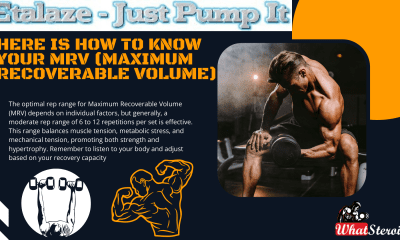
 Bodybuilding6 months ago
Bodybuilding6 months agoHere Is How To know Your MRV (Maximum Recoverable Volume)
-
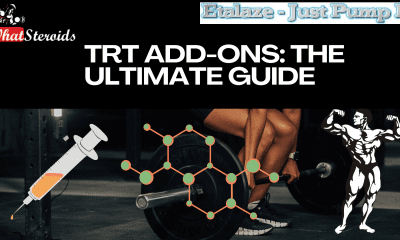
 Bodybuilding Products7 months ago
Bodybuilding Products7 months agoTRT Add-ons: The Ultimate Guide
-

 Bodybuilding9 months ago
Bodybuilding9 months agoHow Much Is Too Much Cardio? Understanding Heart Rate Zones
-

 Bodybuilding6 months ago
Bodybuilding6 months agoHormone Replacement Therapy (TRT) Cycle Guide
-

 Steroids8 months ago
Steroids8 months agoAnadrol Cycle: Benefits, Doses, Alternatives, etc.


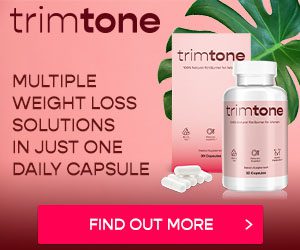
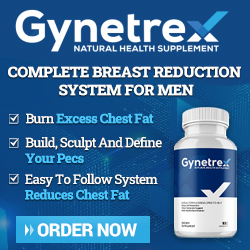





 Click here to buy 1-Test Cyp/DHB 100 by Dragon Pharma
Click here to buy 1-Test Cyp/DHB 100 by Dragon Pharma












